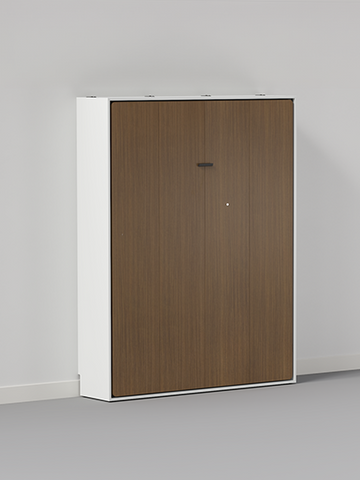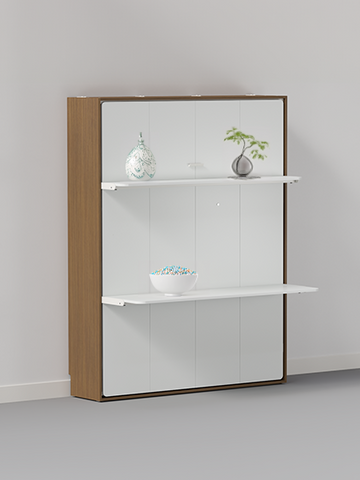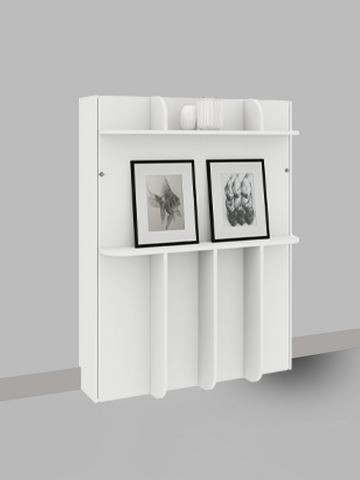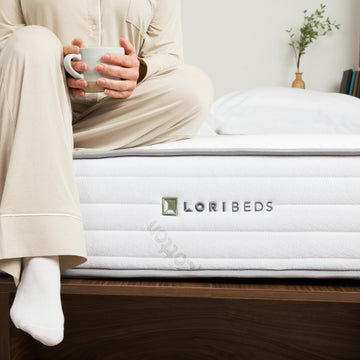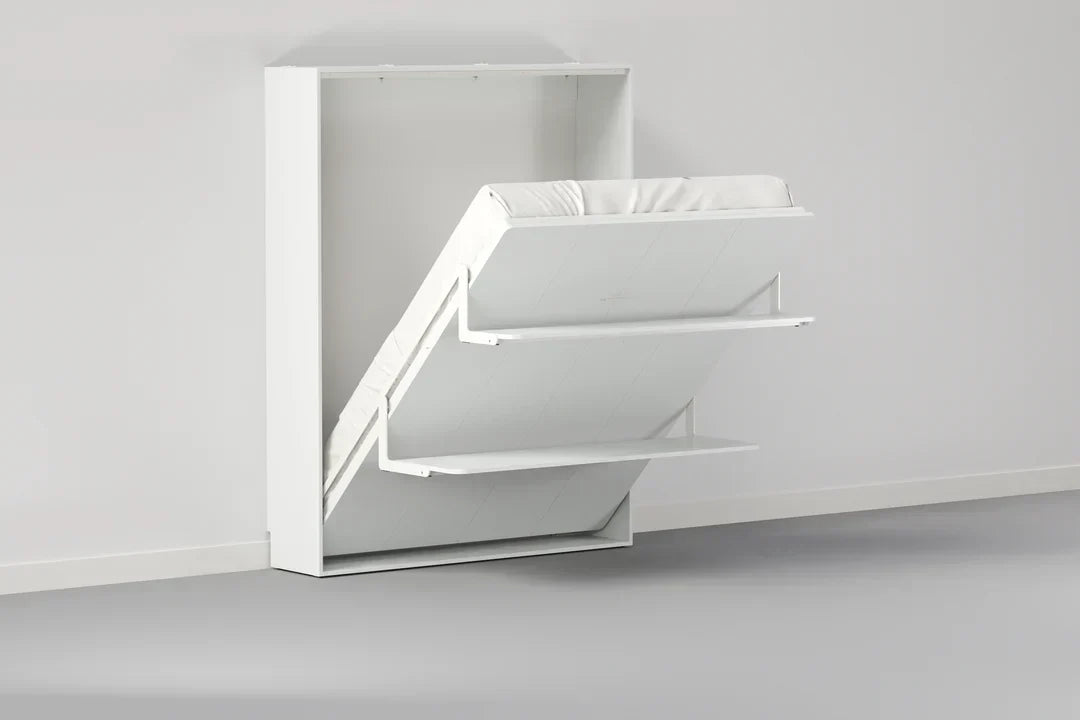The Murphy bed is a space-saving furnishing for the ages. Fold-out wall beds have long captured our curiosity while helping us live large in a small space.
The perfect solution for transforming a spare bedroom or a guest room into dedicated work-from-home offices or carving out a flexible bedroom space in a camper conversion, Murphy beds have witnessed an uptick in popularity recently. They are befitting of all types of modern dwellings.
This isn't the first time that wall beds have been in high demand. They came into vogue more than a century ago before a Murphy bed was even called a Murphy bed. You might be familiar with it as a punchline in a slapstick comedy. While those first impressions could be a little hard to shake, modern wall beds have come a long way since their original clunky metal frames.
Today, Murphy beds are both functional and beautiful. They are also trendier than ever, especially for people living in smaller-than-normal apartments, according to Apartment Therapy. Chances are that you'll be seeing more Murphy beds — but just how much do you know about the space-saving furniture that gives you more room to move?
This article explores the evolution of the wall bed from its legendary beginnings to the stunning models on the market today. Here is the complete history of the Murphy bed.
Check our best Murphy bed units here!
INDEX
Where Did the Murphy Bed Originate?
How the Murphy Bed Got Its Name
How Popular Are Murphy Beds?
Murphy Beds in Pop Culture
Did a Murphy Bed Ever Caused Harm?
Evolution of Murphy Bed Design
Get Your New Murphy Bed Today
Where Did the Murphy Bed Originate?

William L. Murphy invented the Murphy bed around 1900 in San Francisco. As the legend goes, he designed the fold-out bed to woo a young opera singer while following social norms of not inviting women to a gentleman’s bedroom.
However, there were foldable beds long before Murphy made his own version, including:
-
Leonard C. Bailey’s folding metal bed that the U.S. Army later adopted.
-
A patented cabinet bed was invented by Sarah E. Goode in the late 19th century and doubled as a writing desk.
Space-saving beds gained popularity in the early 1900s, but Murphy’s version was innovative for its counterbalanced design. His bed became a bestseller among urban apartment dwellers, making a point that space-saving furniture will never go out of style.
How the Murphy Bed Got Its Name

If you’ve ever wondered how the Murphy bed got its name, the answer may not surprise you now after hearing the romantic story of its invention. But William Lawrence Murphy didn’t even call his wall bed a Murphy bed.
He never trademarked the name “Murphy Bed” at all. Murphy originally called his invention “The Disappearing Bed.” He patented his “In-A-Door” bed in 1908 before founding the Murphy Bed Company in 1911. Fun fact: it continued as a family-run business for decades. Clark W. Murphy, grandson of the founder, became president of the company in 1983.
Over the years, Murphy’s wall bed design became the most popular. And though it has also been called a pull-out bed, hideaway bed, foldaway bed, or wall bed, it’s ultimately best known by the inventor’s moniker: The Murphy bed.
Today, the term “Murphy bed” is so commonly associated with foldaway beds that the United States Court of Appeals for the Second Circuit ruled that the term “Murphy Bed” had entered common usage so thoroughly that it was no longer eligible for trademark protection as of 1989.
How Popular Are Murphy Beds?

Murphy beds are popular today for the same reason they were a century ago—their space-saving functionality.
National Museum of American History's Assistant Collections Manager Robyn J. Einhorn said the invention was a quick success "because of a combination of good timing, a quality product, and an inventive marketing strategy.”
Einhorn said that owning a Murphy Bed became a status symbol when the Murphy Bed Company relocated its headquarters across the country to New York City in 1925.
"People would move into these hotels in New York, and they would have a suite which would include a Murphy bed, so they could pick up the bed and have a parlor, “she said.
Gene Kolakowski, who runs the Original Murphy Bed Company in Farmingdale, Long Island, told CBS News in 2010 that the Murphy bed’s transformative nature has allowed it to stand the test of time.
"He [credited inventor William Lawrence Murphy] was a tinkerer, inventor, and he came up with the idea, 'If I could put the bed away, then she can come into my living room," Kolakowski said. "And it's only a bedroom when she leaves — that was the concept, and that's what got him started."
Throughout the 1920s, newspaper advertisements for apartments used the Murphy bed as a selling point, according to Smithsonian Magazine. The Murphy Bed Company was producing more than 100,000 Murphy beds at this time.
Murphy beds dipped in popularity around the Great Depression and continued to wane until well after World War II, even when steel and raw material rationing ended, according to More Space Place. It wasn't until the economic downturn of the 1970s, when people began moving into small living spaces, that foldaway beds returned to the mainstream.
Everything old is new again. And the same goes for Murphy beds. Now they are considered back in vogue, especially for people living in square-foot-starved apartments.
Murphy beds “continue to fill a need in living spaces of today, whether it is for small city apartments or suburban homes of empty nesters turning a college student's old bedroom into an office/guest space," Einhorn said.
Get your new pull-down bed for your one-room apartment and enjoy a larger floor space.
Murphy Beds in Pop Culture

Murphy beds have been used as comic props in movies and television shows ever since its invention.
The earliest known film to feature a Murphy bed is the 1900 Biograph Company film A Bulletproof Bed, which was remade in 1903 by Edison Pictures as Subub Surprises the Burglar, according to Wikipedia's pop culture guide.
Perhaps the most famous instance of a Murphy bed appearing in pop culture was Charlie Chaplin’s “One A.M.” The 1916 film depicted a five-minute-long struggle between Chaplin and the Murphy bed, ending with both parties worse for the wear and Chaplin resigning himself to sleep in the bathtub.
Murphy beds have made appearances in The Three Stooges, The Great Muppet Capers, Who Frame Roger Rabbit, and even in the James Bond movie You Only Live Twice.
Throughout the decades, Murphy beds have similarly been used in the media to incite laughter, often by causing injury or frustration, which may explain why people often associate Murphy beds with some sort of calamity.
And it is not just TV and film.
There is a 1958 song titled “The Murphy Bed” by Gallup & Goodhart. The lyrics don’t exactly bode well for the Murphy bed. One line, “The Murphy bed, that folds into the wall, the bed went up, O’Reilly went up, and he never came down at all,” further perpetuated the myth that people could be swallowed whole by a man-eating wall bed.
The notion of a “man-eating” Murphy bed persisted well into the 21st century. In the popular video game The Sims, your Sim would die from being hit when trying to pull down the bed from the wall, and the Grim Reaper will come for them.
Over the years, pop culture has been kinder to Murphy beds.
More recently, CBS’ 2011 hit show Two Broke Girls prominently featured a Murphy bed. Main character Caroline Channing installed the bed in a one-bedroom apartment she shared with a roommate in Brooklyn, making the wall bed hipster-chic among its cult fanbase.
Did a Murphy Bed Ever Caused Harm?

Pop culture references are often the first impression many get of a Murphy bed, which leads to this often-asked question. Google the term “Murphy Bed”, and among the top suggested related searches that pop up is, “Are Murphy beds dangerous?”
In short, yes. A Murphy bed could kill you, especially if the steel frame and the bed are not secured and used properly. There have been incidents of Murphy bed-related injuries and deaths.
A Murphy bed can only cause harm if the steel frame and the bed are not secured and used properly. Incidents of Murphy bed-related injuries and deaths are mostly because of wrong installation and people not following instructions.
But as The New York Times Magazine writer Jody Rosen so elegantly stated in a 2018 piece about these freak accidents, “It was hardly an epidemic; statistically speaking, you were probably as likely to die by tripping over an ottoman or walking under a falling piano.”
The cases are few and far between. In 1982, the sad story of an intoxicated man being suffocated inside a closed Murphy bed made headlines. Two women were entrapped and suffocated by an improperly installed Murphy bed in 2005, and in 2014, a 33-year-old Staten Island man’s death was allegedly caused by a defective Murphy bed. The press dubbed the beds “murderous” after the incident.
Still, as Rosen noted, “There were enough of these mishaps to seize the imagination, fixing in popular consciousness the image of a bed that could snap you up in its jaws as you slept.”
According to Go Downsize, “When used properly, Murphy beds are not dangerous. They will not fold up against the wall when you are on top of the bed. When the frame is mounted properly on the wall, it will not fold down on you either.”
Just like any household product or appliance that is used incorrectly, it can result in injury, but as Rosen pointed out, death by Murphy bed is extremely unlikely.
Evolution of Murphy Bed Design

Murphy beds are safer and more stylish than ever while still giving you a good night's sleep. Early designs required springs or pistons to lift and lower the metal bed frame. The metal mechanisms were primitive, clunky, and sometimes dangerous, but the system achieved the goal of allowing a mattress to fold up into a cutout space in the wall or cabinet with a hinge.
Modern Murphy beds come in several variations and can range in price from a couple of hundred dollars to thousands of dollars, depending on the materials and size. The majority of wall beds on the market today, however, still rely on this often-costly metal spring system to lift the bed.
Lori Beds’ modern models don’t use cumbersome metal frames or springs at all. Instead of using the force of springs or pistons, the Lori Bed can be lifted and lowered by hand using your and your lifting partner's strength.
Instead of using the force of springs or pistons, the Lori Bed can be lifted and lowered by hand. As a result of this new design, the company was able to pass that savings on to the customer.
Each bed is made from cabinet-grade poplar plywood, ensuring its stability and durability. The company offers a range of pre-finished Lori Beds or an unfinished model that can be painted or stained to the color of your choosing.
Some things haven't changed. Even back then, the folding cabinet bed didn't require a box spring. And most still don't. The mattress instead rests on a platform and is secured by elastic straps or a metal bar to prevent sagging when it's in the closed position. Not having to purchase a box spring is another cost-saving advantage of a Murphy bed.
While the Murphy bed design has been improved since ropes and hooks suspended the frames at Thomas Jefferson’s Monticello at the birth of the United States of America, the concept of this space-saving furniture has ultimately stood the test of time.
Get Your New Murphy Bed Today
The Murphy bed has evolved from a foldable bed into a modern design staple. From its origins in the early 1900s, Murphy beds have become incorporated with sleek finishes, integrated storage, desks, sofas, and even smart technology features. Their lasting popularity is a testament to the demand for versatile and space-saving furniture that doesn’t compromise comfort.

